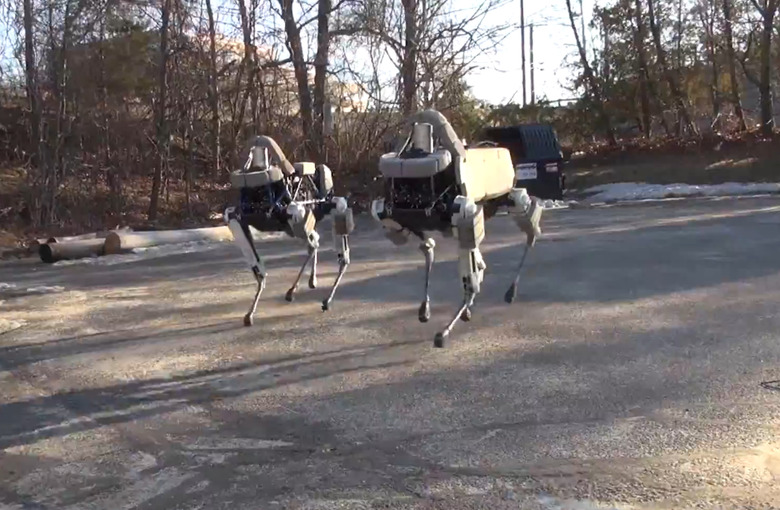Video: This May Be The Most Incredible Google Robot Yet
Google has taken a big interest in developing robots and a new video posted by Google-owned robotics firm Boston Dynamics shows off what might be its most incredible robot yet.
DON'T MISS: The 5 craziest robots in Google's growing android army
The new robot, dubbed Spot, is a four-legged beast that weighs in at a mere 160 pounds despite its bulky-looking metal body.
Like other Boston Dynamics robots we've seen in the past, spot has been designed to maintain its balance in rough conditions — at one point in the video, a Boston Dynamics team member gives the robot a forceful kick, only to see it stagger and quickly recover its footing. Elsewhere in the video, Spot successfully climbs up stairs, walks over rocky terrains and maintains pace with a human who jogs right beside it.
Boston Dynamics says the robot is "electrically powered and hydraulically actuated" and "has a sensor head that helps it navigate and negotiate rough terrain." Google first bought Boston Dynamics in December 2013 and it was one of several major robotics firms acquired by the company in a six-month span.
Check out the full video of Spot in action below — it's really one of the most impressive robot demonstrations we've ever seen.
